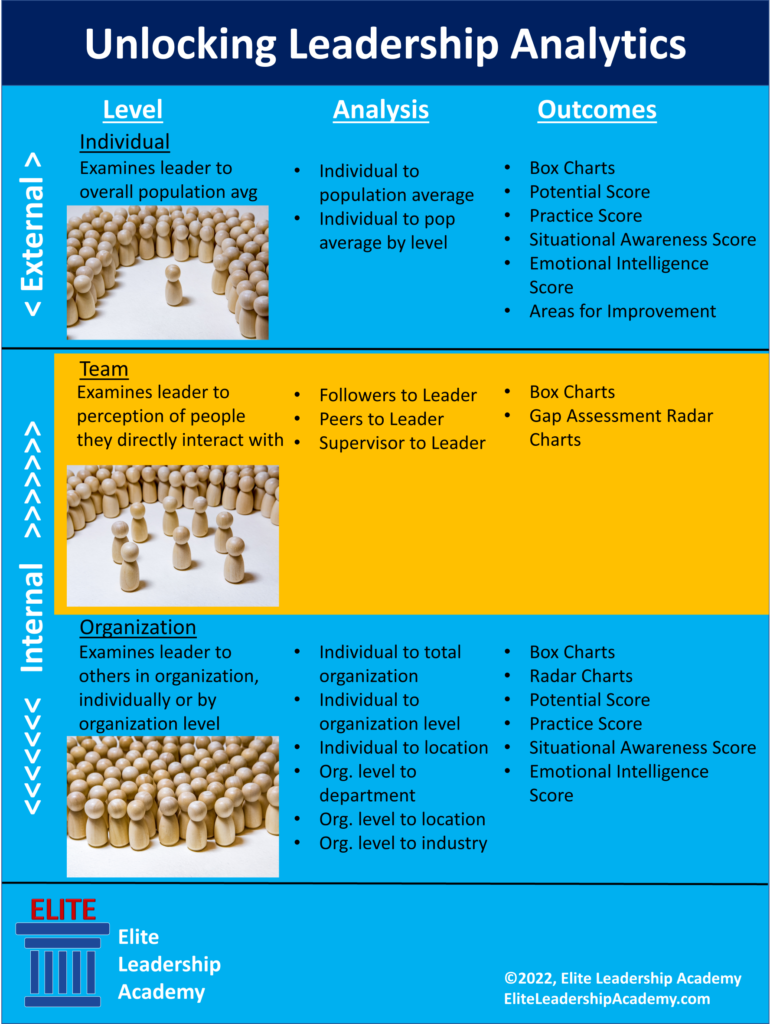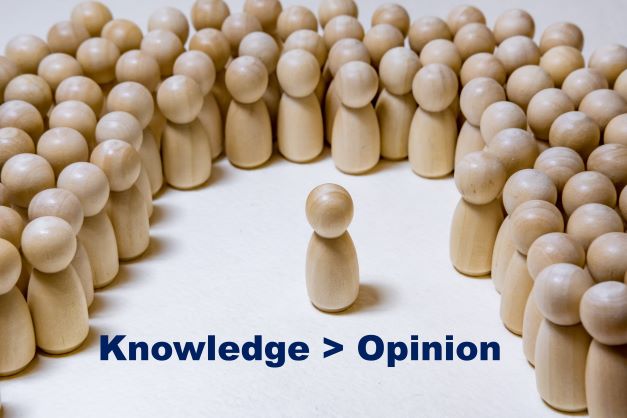The importance of quantifiably measuring and monitoring leadership progress cannot be stressed enough. If leadership behavior is not measured, it can’t be improved. As the data scientist, W. Edwards Deming states, “Without data you’re just another person with an opinion.”
Leadership analytics is very similar to the customer relationship analytics work I helped pioneer in the mid-1990s. In customer relationship analytics, the goal was to identify and retain an organization’s best customers. In leadership analytics, the goal is to identify and retain an organization’s best leaders.

Keep in mind that leadership analytics is not based on any one opinion on leadership or assessing a person’s knowledge of leadership. It is built upon decades of academic and business research on the behaviors that lead to effective leadership. It can be utilized to identify leaders with high leadership potential with a regular practice of leadership as well as identify areas for improvement for people who want to become better leaders.
Many levels are available to drive improved outcomes from leadership analytics. The Individual level is the easiest to start with. At this level, individuals are assessed in comparison to a general population average. The population average is needed because analysis without context is not as illuminating as analysis with context or comparison. Previous articles have expanded on this by analyzing leadership behaviors at the organization level, i.e., C-Level, Vice Presidents, etc. That analysis revealed some distinct differences between the leadership behaviors at different organization levels. Individual leadership analytics is based on data external to an individual’s organization.
The next level is to analyze performance at the Team level, where an individual’s results are analyzed in context with of their team dynamics. The leader’s team members, peers and superiors assess the leader’s behavior using a similarly worded instrument that assesses the perception of the leader’s behaviors by people they interact with directly. This analysis provides insights into any gaps or blind spots the leader may have in their abilities. This analysis is internally focused using data solely from within the organization.
The Organization is the next level of leadership analytics where the leader’s behavior is examined in context of other leaders at the same level, same division, same location or the entire organization. In addition to the individual level analysis that can be performed within the organization, a number of other insights can be derived from an organization-wide leadership analysis, including, organization level, departments, location and functional areas.
Implementing leadership analytics requires the right instrument to capture and measure leadership behavior. Read about the instrument we developed at MeasuringLeadership.com. It can be utilized to supplement any corporate leadership development program as you can’t improve what you don’t measure. Human resource managers and executives are a natural fit for these using tools.
Coaches have identified areas for use in their practice. Not only does leadership analytics identify areas for improvement in a client’s potential and/or practice of leadership, but it usually points to a need for coaching in general. External coaching is so much more effective than internal coaching.
Recruiters can also find a use for leadership analytics. Instead of presenting candidates that just meet the client’s requirements, they can incorporate a leadership score that may differentiate them from other potential candidates.
Leadership analytics can be a powerful tool to not only measure leadership potential and practice, but also help individuals and organizations better understand how they perform compared to external and/or internal assessments. As this is a fairly new area, you may have many questions about its implementation. Please leave them in the comments below or message me directly.




